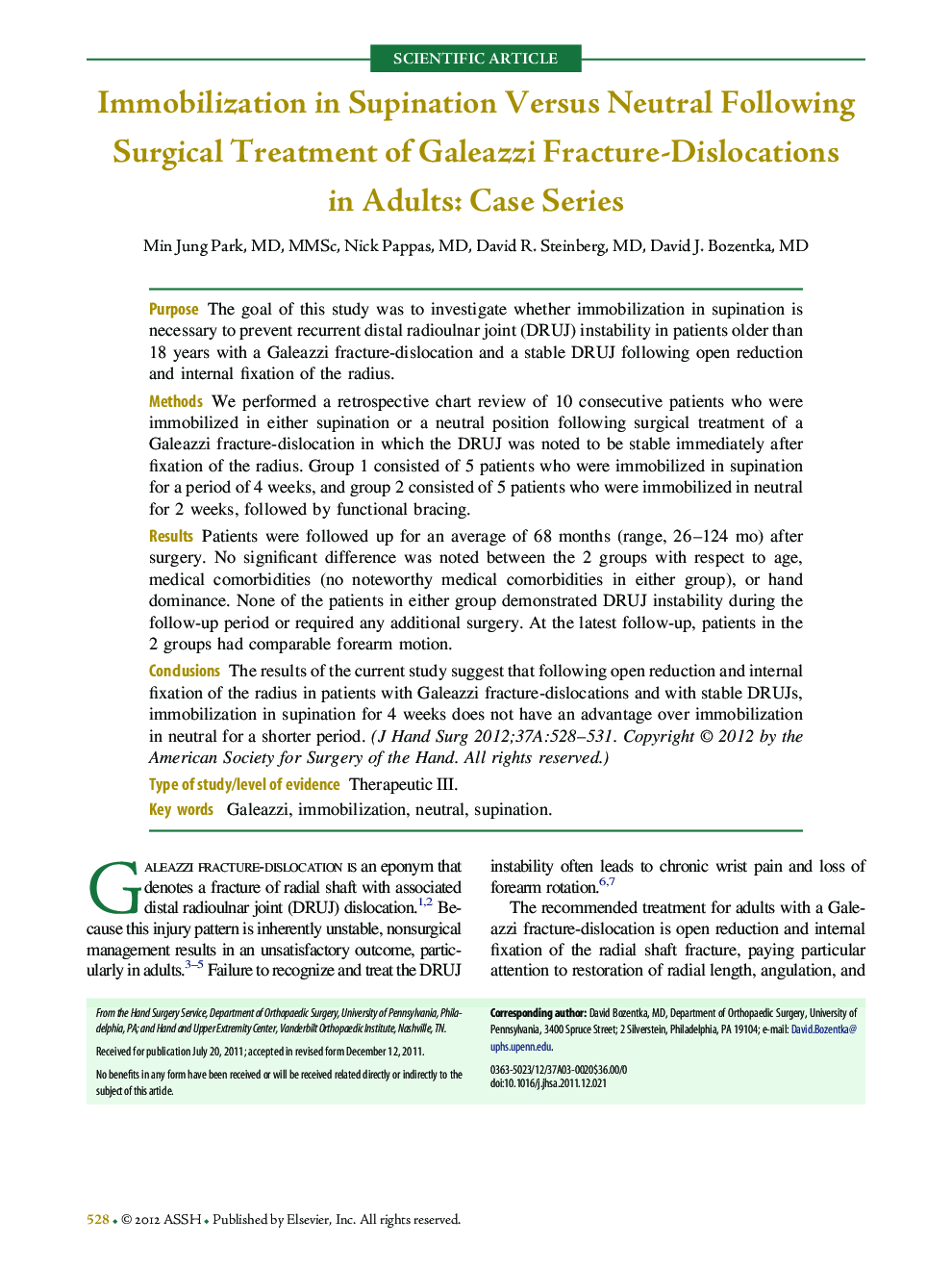| Article ID | Journal | Published Year | Pages | File Type |
|---|---|---|---|---|
| 4069440 | The Journal of Hand Surgery | 2012 | 4 Pages |
PurposeThe goal of this study was to investigate whether immobilization in supination is necessary to prevent recurrent distal radioulnar joint (DRUJ) instability in patients older than 18 years with a Galeazzi fracture-dislocation and a stable DRUJ following open reduction and internal fixation of the radius.MethodsWe performed a retrospective chart review of 10 consecutive patients who were immobilized in either supination or a neutral position following surgical treatment of a Galeazzi fracture-dislocation in which the DRUJ was noted to be stable immediately after fixation of the radius. Group 1 consisted of 5 patients who were immobilized in supination for a period of 4 weeks, and group 2 consisted of 5 patients who were immobilized in neutral for 2 weeks, followed by functional bracing.ResultsPatients were followed up for an average of 68 months (range, 26–124 mo) after surgery. No significant difference was noted between the 2 groups with respect to age, medical comorbidities (no noteworthy medical comorbidities in either group), or hand dominance. None of the patients in either group demonstrated DRUJ instability during the follow-up period or required any additional surgery. At the latest follow-up, patients in the 2 groups had comparable forearm motion.ConclusionsThe results of the current study suggest that following open reduction and internal fixation of the radius in patients with Galeazzi fracture-dislocations and with stable DRUJs, immobilization in supination for 4 weeks does not have an advantage over immobilization in neutral for a shorter period.Type of study/level of evidenceTherapeutic III.
